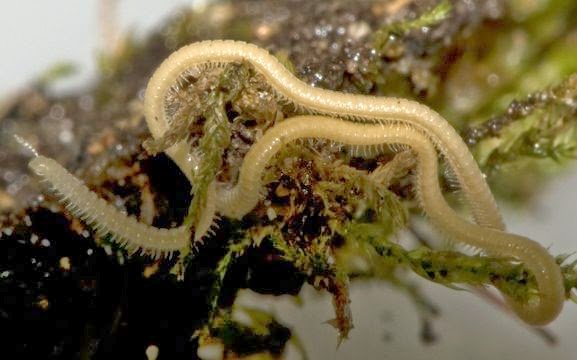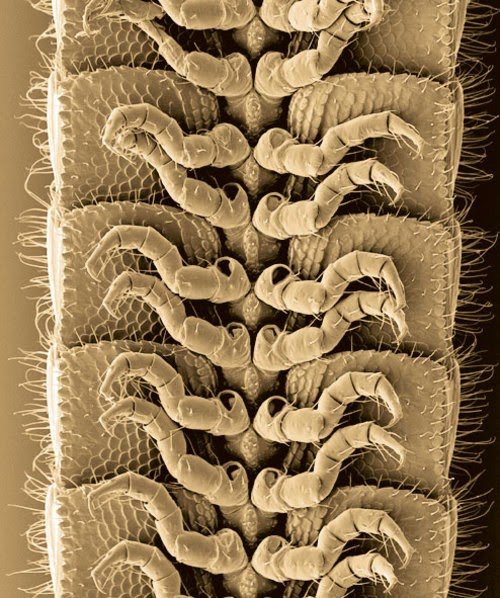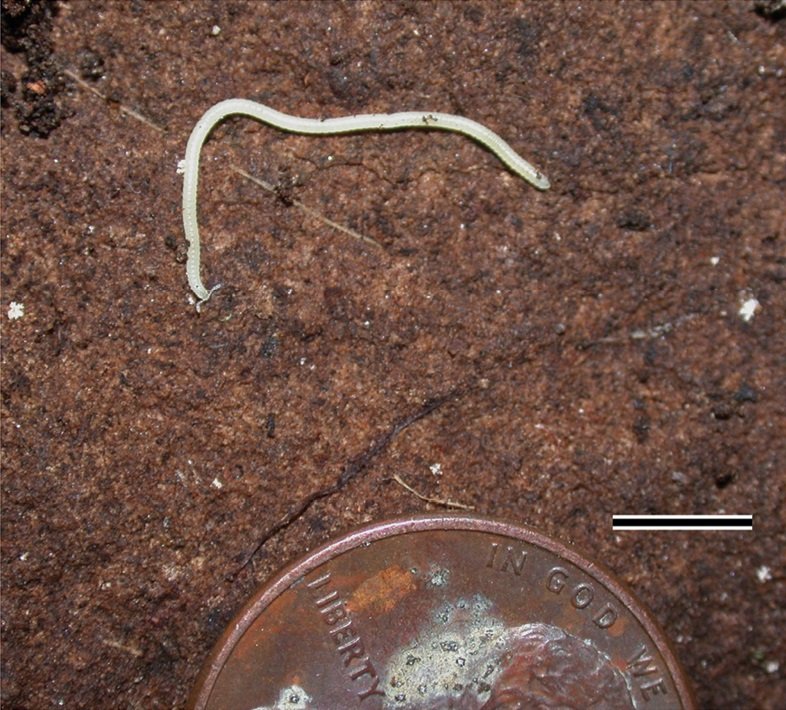Yesterday I shared with you steemians the world's largest one-cell organism. What I have for you now is another oddity, the world's leggiest animal!
If you were to take a guess, you would probably say that the world's leggiest animal is some kind of millipede species? You would be correct! But have you ever wondered how many legs a millipede actually has? If your answer is something around 1000 then you are wrong! Despite the name, most millipedes average between 100 and 300 legs.
But there is a species that comes very close to this number. A species that up until very recently was thought to be extinct! And the scientific name of this species is Illacme plenipes.

Female I. plenipes with 618 legs
How Many Legs Does it Have?
Well, we still don't know the maximum number of legs the species can attain! What we do know is that adults usually have over 600 legs, with one recorded individual having 750 legs! That's lot of legs, twice the average for millipede species and then some more!
Interestingly, it's not like I. plenipes is a big millipede or something. It's actually on the smaller side, with females growing to about 3 cm and males being even smaller and with fewer legs. To give you a comparison, the gigantic Archispirostreptus gigas (which is about 10 times bigger) has only 256 legs!
Not surprisingly, "Illacme plenipes" translates to " "the acme of plentiful legs".
In the video below you can see a specimen with 666 legs. A sign from Satan perhaps?
Why so many legs?
There is not a definitive answer to this yet but Marek has proposed three theories. The first one is that the great number of legs benefits a deep subterranean lifestyle clinging to sandstone, helping the animal to move forwards forcefully.
Another theory is that the large number of legs is just a byproduct of the disproportionally long trunk. The longer trunk allows the species to store more eggs, and consequently this might be why females are the only ones known to reach close to the 750-leg record. Alternatively, the long body could allow the creature to extract more moisture from its food, since it lives in a quite dry environment.

Scanning electron micrograph showing the millipede's legs
Discovery, "Extinction" & Rediscovery!
The history of this creature is a very interesting one. The first to report the species was Orator Fuller Cook (1867-1949). On November 27, 1926, Cook found and collected several specimens in San Benito County, California, all from a single colony. The colony was in a small valley of a northern slope wooded with oaks, under a rather large stone.
Many years passed and the species was not seen again! The creature was presumed to be extinct! I wonder if he died feeling any regret knowing that he might have killed the last of the species!
Fortunately, this couldn't be further from the truth. The species was rediscovered about 80 years later, in November 2005, by Paul Marek, a phd student at the time from the East Carolina University., who was conducting research on millipede systematics and evolution in San Benito County. Later, Marek and his colleagues produced a more detailed description of the anatomy and ecology of the species in 2012. [2,3]

Scanning electron micrograph, head and antennae
Where does it live?
The species has only be recorded in the central region of the U.S. state of California.
What does it eat?
We don't know yet! The shape of the mouth accessories suggests that they don't follow the typical millipede diet which is decaying organic matter that is mechanically fragmented. Their mandibles are stylet-like and appear to be adapted for sucking and piercing plant structures.
 Female with 618 legs
Female with 618 legs
Is the species threatened?
The exact conservation status of the species is unknown. However, Marek and his colleagues believe that the species is possibly threatened with extinction and have called for conservation measures to be taken. Unfortunately human activity keeps destroying its apparent limited habitat. To counter this, he has tried to reproduce the species in the lab but without any success.
 Female specimen
Female specimen
Some other quick & interesting facts about Ilacme Plenipes
- The largest ever recorded specimen was a female. It had 192 segments, a length of 3.6 cm (1.4 in) and a width of approximately 0.7 mm. Other recorded specimens were 2.6 to 2.9 cm long, 0.5 to 0.6 mm wide, and had 136 to 152 segments. As with all millipedes, each segment features 4 four legs.
- The species has no eyes. Not that they need them! Their underground habitat is in absolute dark!
- The have massively disproportionately long antennae, probably used by the species to feel their way through the dark
- Adults have a whitish color, move extremely slowly and roll themselves into spiral coils when disturbed. From afar, they look like white pieces of thread.

Male specimen with coin for comparison
More Videos
Here are some more videos showing this cool animal in action:
Photo Credit
All photos taken by Paul Marek (CC BY 3.0). You can check more photos at wikimedia
References & Further Reading
- A redescription of the leggiest animal, the millipede Illacme plenipes, with notes on its natural history and biogeography
- Biodiversity hotspots: Rediscovery of the world's leggiest animal
- ECU students rediscovers rare millpede
- Illacme plenipes - Wikipedia
SteemSTEM & Steemiteducation
Please consider supporting the @steemstem project. SteemSTEM is a community driven project which seeks to promote well written/informative Science Technology Engineering and Mathematics postings on Steemit. Click here to join the chat and learn more! The steemstem project is run by @justtryme90, @lemouth and some other cool guys & gals :)
You may also want to check, @steemiteducation, a project for steemian educators and people posting educative content
More Strange Animals To Come
I will be posting one new strange animal each and every day so if you enjoyed this post make sure to follow me and let's discover together some of the world's most strange and bizarre creatures! An upvote and resteem would be nice too :P In the meantime, you may want to check out these 5 Solar-Powered animals, the fungus that turns ants into zombies and the helicopter-like Brazilian Treehopper.




